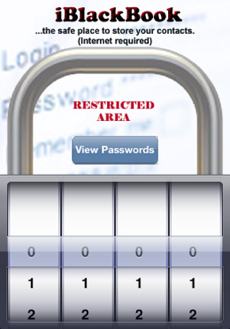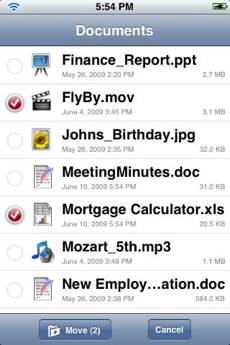How to Fix Top 10 iPhone Annoyances
Even the greatest gadgets have flaws, and the iPhone is certainly no exception. Praise it all you want, but the "Jesus phone" has plenty of little annoyances or nuisances that get under a user’s skin. Fortunately, technology is all about workarounds to common problems. So we’ve not only put together a Top 10 list of iPhone annoyances to vent about, we’re also offering solutions (where we can) to fix those pesky iPhone problems we hate so much.
1. AT&T Is the Carrier
As iPhone users outside the United States begin to enjoy tethering and multimedia messaging services (MMS), AT&T’s exclusive hold on the iPhone angers existing customers and may be irritating Cupertino as well. The cellular provider is slow to provide tethering and MMS, and it’ll likely charge a hefty sum once it gets around to adding them. Add long service contracts, higher data rates, and unfair usage conditions, such as the inability to use SlingPlayer over 3G even while other AT&T phones can, and you’ve got plenty of good reasons to hate your wireless carrier.
Ideally: AT&T’s exclusive deal with Apple could come to an end, by contract or by Congressional action, and Apple would take its business elsewhere, namely to Verizon. That, or AT&T would stop treating iPhone users like second-class customers.
The workaround: I haven’t tested this, but visiting a site called BenM.at and following instructions detailed at iPhoneHacks will reportedly allow tethering without having to jailbreak your iPhone. (Disclaimer: There’s always a chance that AT&T will punish you for being sneaky.) If you’re just fed up with AT&T’s service and want to stick it to the man, unlock your iPhone and switch to T-Mobile--the only other major U.S. carrier using the iPhone-friendly GSM radio band--until a better offer comes around.
2. Remote Wipe Costs $99 Per Year

The iPhone was definitely in your pocket when you got into the taxi, but now that you’re home, it’s nowhere to be found. What to do? If you aren’t already paying $99 per year for MobileMe, you’ve got no way to nuke your phone from afar and protect personal information.
Ideally: Apple could offer a pay-per-use remote wipe feature, without requiring a MobileMe subscription. That’d make it less like buying insurance and more like canceling a lost check.
The workaround: A $2 app called iSecurity (Find My Phone) creates a spoof app called either iPasswords or iBlackBook. The app pretends to hold your personal information. Each time a foolish criminal tries to enter the password for this app, it e-mails you the phone’s location. As an alternative, consider securing your iPhone the old-fashioned way with password protection.
3. E-Mail Management Is Weak
Though the iPhone’s 2.0 OS update added bulk e-mail management, it’s not very good. You can tap individual messages to mark them for deletion or movement to another folder, but there’s no "Select All" option for deleting or moving batches of mail at one time. It’s also not possible to run a search term and delete the results, so forget about easily wiping correspondence with particular people.
Ideally: Apple could make bulk e-mail management more robust simply by adding the features described above.
The workaround: There’s no truly satisfying alternative. Accessing your e-mail account via your provider’s Web-based interface is the only option for more control. It may not be as pretty as the built-in iPhone mail app, but you’ll get some of your functionality back.
4. You Can’t Create Contact List Groups
On the iPhone, everyone’s your friend, even your boss. That’s because the built-in Contacts app won’t let you split work and personal contacts into separate groups or allow you to create custom groups. Everyone’s co-existing in one massive list unless you first create subsections on your computer.
Ideally: Apple could fix this. A simple drop-down list on the info page for each contact, along with separate tabs above the contact list, would do nicely.
The workaround: Get an app to do the job instead. ABContacts lets you set up smart filters that divide contacts into groups by name, location, place of employment, or notes. Groups lets you do the sorting in a drag-and-drop interface, and includes the ability to send mass e-mails--perfect for your mobile spam operation.
5. IMAP Gmail Is Lame
If you’re an avid Gmail user, you know that you can configure the iPhone’s Mail app to retrieve your Gmail. Sadly, the iPhone’s Mail app is devoid of all the features you love about Google’s mail service, especially threaded viewing and starring. If you like to e-mail friends or engage in otherwise long conversation threads during the day, the Mail app will quickly become overwhelmed.
Ideally: We’d like to see Apple blend traits from Gmail’s Web application with its Mail app. The look of Web Gmail would be preserved, but old messages would be cached for offline viewing. Naturally Hotmail and Yahoo mail users would also benefit.
The workaround: While you can’t replace the Mail app entirely, you can swap it for Gmail’s Web app, which sports an iPhone-optimized layout that’s always getting better. Swipe recognition was recently added, so you can archive e-mail messages with a finger stroke, and caching will likely come along with HTML5 support. Add Gmail to the iPhone’s home page through the "+" button in Safari, and toss the old Mail app onto your junk page. You’ll hardly know the difference.
6. You Can’t Store Files or Attach Them to E-Mail

Sure, the iPhone isn’t a computer, but a smartphone with so many capabilities and a generous hard drive should at least allow storing and sending of files. Photos and video can be sent directly only from the iPhone’s camera roll; also, you have no way to download Word documents and other files for editing and sending later.
Ideally: The solution would be for Apple to add a file manager for photos and documents, along with a convenient way to attach files to e-mail. For security, Apple could restrict downloads to just certain file types, and the files would have to be scanned by a third-party app hosted online.
The workaround: File transfer and storage tools abound for the iPhone. Check out QuickOffice Files, a $1 app that allows you to e-mail documents, transfer them to a computer, or view them on the iPhone. The free Box.net allows you to store documents in an online locker and access them through the app.
7. Battery Drains Too Fast
Because the iPhone is a cellular phone, we tend to forget that the battery won’t hold up for more than a day when its computerlike functions are pushed to their limit. (Isn’t it disheartening to see the battery meter drain during a prolonged session of Tap Tap Revenge?)
Ideally: We are still waiting for Apple to let users replace the battery or buy a bigger one. I’m not holding my breath.
The workaround: Turn Wi-Fi off when you’re on the road. Turn 3G off when using Wi-Fi or turn off Wi-Fi if you don’t need it. Turn down screen brightness as much as possible. Go into Settings and turn off auto-refresh for individual apps. If all else fails, buy an external plug-in battery, even if that drains the coolness factor.
8. The App Store Is a Pain to Browse

There may very well be an app that suits your wildest dreams, but good luck finding it among the junk that populates so much of the iPhone’s App Store. Only a text search or sorting apps by release date will get you beyond the top 100 in each category, and even then you’ll turn up plenty of unwanted results. (As reported this week--and as we’re glad to hear--Apple has added search keywords, but we understand that the function is somewhat glitchy.)
Ideally: A great search option would be a "Show All" feature. This would allow you to sort by name or rank, covering the full breadth of the App Store’s vast shelves.
The workaround: Use an app to browse the store, such as App Miner, which builds lists of apps that go on sale--including paid apps being given away--and lets you create a "watch list" for discounts. For filtering and better user recommendations, try using Web sites such as Apptism, AppBeacon, or Macworld’s App Guide.
9. You Can’t Run Pandora or Other Apps in the Background
One of the iPhone’s greatest assets is the ability to stream Internet radio stations such as Pandora and Slacker from anywhere with a 3G or Wi-Fi connection. Too bad you can’t listen to that music while checking e-mail or playing games.
Ideally: In a perfect world, Apple would allow certain apps to run at the same time as others. We understand that Apple’s trying to keep the smartphone running smoothly, but if the iPod app can play music in the background, the iPhone’s audio apps should be able to do the same.
The workaround: Sadly, you’ll have to use your get-out-of-jail-free card. Jailbreakers can download Gaizin’s Backgrounder app for full multitasking glory.
10. Default Apps Can’t Be Hidden
The iPhone’s start screen is filled with shortcuts to prepackaged applactions that come with your iPhone whether you want them or not--for example, an app for checking stocks whose shortcut can’t be removed from the iPhone interface. Despite Apple’s insistence, not everyone wants to check the Dow Jones Industrial Average or for that matter the weather, or even use the iPhone’s calculator. That the iPhone’s prepackaged apps can’t be hidden, deleted, or otherwise customized speaks to the stubborn rigidity of Apple.
Ideally: If Apple wanted to fix this annoyance, it would have an "Appearance" option in the Settings menu that would allow users to make unwanted apps disappear without actually deleting them.
The workaround: Isolate undesirable apps on your last home page--that’s the quick and dirty method. A more elaborate trick, detailed at Macenstein, stashes apps on a hidden overflow page, though this works only until the iPhone is turned off. Jailbreakers will seek out programs such as Sbsettings or Poof.